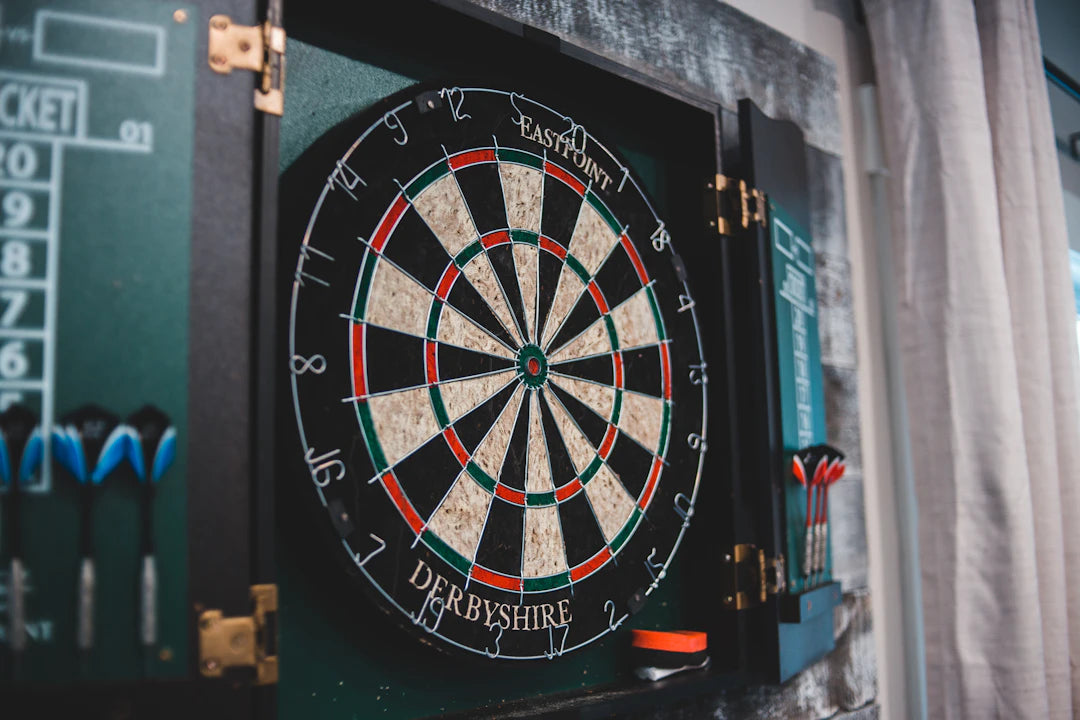Overview
This blog provides essential techniques and tips for beginners in darts, covering topics such as choosing the right darts, mastering grip and throwing techniques, effective aiming strategies, structured practice, mental focus, and engaging with the darts community. With the right mindset and consistent practice, newcomers can quickly improve their skills and enjoy the game.
Frequently Asked Questions
1. What are the basic components of the game of darts?
2. How should beginners choose their darts?
3. What grip techniques are recommended for novice players?
4. What are some effective throwing techniques for beginners?
5. How can beginners improve their aiming strategies in darts?
Darts is a thrilling game that combines skill, strategy, and precision. Beginners may find themselves overwhelmed by the various techniques and strategies involved in mastering this enjoyable pastime. In this blog post, we will explore the best darts techniques tailored specifically for novice players. Whether you intend to play casually with friends or aim to advance your skills for competitive play, these tips will help you on your journey to becoming a darts pro. Let’s dive in!
Understanding the Basics of Darts
Before diving into advanced techniques, it’s crucial for beginners to grasp the fundamental aspects of darts. The game is typically played on a circular board divided into numbered sections, with each section scoring different points. Understanding the mechanics of the game will set the stage for honing your skills effectively.
Choosing the Right Darts
Your journey begins with selecting your darts. Beginners should focus on finding darts that are comfortable to hold and throw. Consider the weight and grip style, as both will influence how you handle the darts. Weighing between 18 and 24 grams is a good starting point for most newcomers.
Understanding Dartboards
There are two main types of dartboards: bristle and electronic. Bristle boards are most commonly used and are made from sisal fibers, which self-heal after darts are removed. Electronic boards offer automatic scoring but can be pricier. Pick the type that suits your playing style and environment.
Grip Techniques to Master
Your grip on the dart is essential, as it directly affects your throw. Here are some grip techniques to consider:
The Basic Grip
The basic grip is ideal for beginners, as it promotes comfort and ease. Hold the dart in your dominant hand with your index and middle fingers. Your thumb should support the dart from underneath. Make sure your grip is firm yet relaxed to promote a smooth release.
The Pencil Grip
Another grip often used by beginners is the pencil grip. In this grip, the dart is held much like a pencil, between your index finger and thumb. This grip allows for more control and precision, especially for players looking to improve their accuracy.
Throwing Techniques for Success
Once you've established a good grip, focusing on your throwing technique is vital. Here are some effective throwing techniques for beginners:
The Stance
Your stance can significantly impact your throw. Stand with your feet shoulder-width apart, positioning your dominant foot slightly ahead. This posture helps maintain balance while you throw. Most players prefer to angle their body towards the board, which allows for better alignment.
The Throwing Motion
To achieve an effective throw, start with the dart held just above your shoulder. As you throw, extend your arm while keeping your elbow steady and aimed at the target. Allow your wrist to snap forward as you release the dart for maximum speed and accuracy. Practice connecting each aspect of your motion to create a fluid throw.
Aiming Strategies
Successful aiming is a crucial component in darts. Beginners must develop effective aiming strategies to improve their accuracy:
The Visual Targeting Method
One of the best techniques for beginners is the visual targeting method. Focus intently on the desired spot on the board – whether it's the bullseye or a specific number. By keeping your eyes on the target throughout your throw, you can enhance your accuracy significantly.
Use of Sightlines
Align your body with the target to create a straight sightline. Many players find success by establishing a routine that includes standing in the same position and aiming towards the same area. This creates a muscle memory that can improve your aim over time.
Practicing Perfectly
No technique is effective without regular practice. Here are tips on how to effectively practice your darts skills:
Structured Practice Sessions
Instead of randomly throwing darts, set structured practice sessions. For instance, dedicate time to focus on specific techniques like grip, stance, and aiming. Running targeted drills improves your overall gameplay.
Track Your Progress
Keep a record of your practice sessions. Logging your scores and techniques helps you recognize areas of improvement over time. Tracking progress not only boosts motivation but also allows you to identify patterns in your performance.
The Importance of Mental Focus
Equally important to physical technique is your mental state while playing darts. Here are some tips to enhance your mental focus:
Stay Positive
A positive mindset can drastically affect your performance. Avoid self-criticism after a poor throw; instead, focus on the next opportunity to improve. Maintaining a positive outlook fosters a conducive practice and playing environment.
Use Visualization Techniques
Before throwing, visualize yourself hitting the target. Professionals often use this mental trick to enhance concentration and confidence. Picture the trajectory of the dart and how it will connect with the board to prepare your mind for the actual throw.
Engaging with the Darts Community
Joining the darts community can provide invaluable support and resources for your player journey. Engage with fellow enthusiasts through local leagues, online forums, or social media groups. Sharing experiences and learning from others will accelerate your development as a darts player.
Participate in Local Tournaments
Competing in local tournaments, even as a beginner, can be an exhilarating experience. Such opportunities allow you to put your skills to the test while meeting other players. Engaging in competition helps you learn new strategies and gain confidence in your abilities.
Incorporate Game Strategies
As you get comfortable with the basics, think about developing game strategies. Here are some basic strategies that can boost your gameplay:
Practice Scoring
Focusing on different scoring methods will help you adapt to various game styles. For instance, in 501, the objective is to reduce the score to zero by hitting specific numbers and switch aiming strategies based on your score. Understanding game strategies allows adaptability and enhances overall gameplay.
Learn Your Opponents’ Techniques
As you engage with other players, observe their techniques. Learning from others will provide fresh perspectives and insights into your gameplay. Once you recognize what works for you, you can blend it with the techniques you've learned.
The Path Forward: Your Darts Journey
Mastering darts takes time and diligent practice, but with the right techniques and mindset, beginners can quickly elevate their skills. Remember to focus on your grip, throw, aim, and mental conditioning as you hone your abilities. Join local communities, engage in structured practice sessions, and never hesitate to seek advice from seasoned players.
Enjoy the process of learning and embrace the competitive spirit inherent in the game. With each session, your confidence will grow, and your gameplay will improve. Now go grab your darts and hit the board—an exciting journey awaits!



